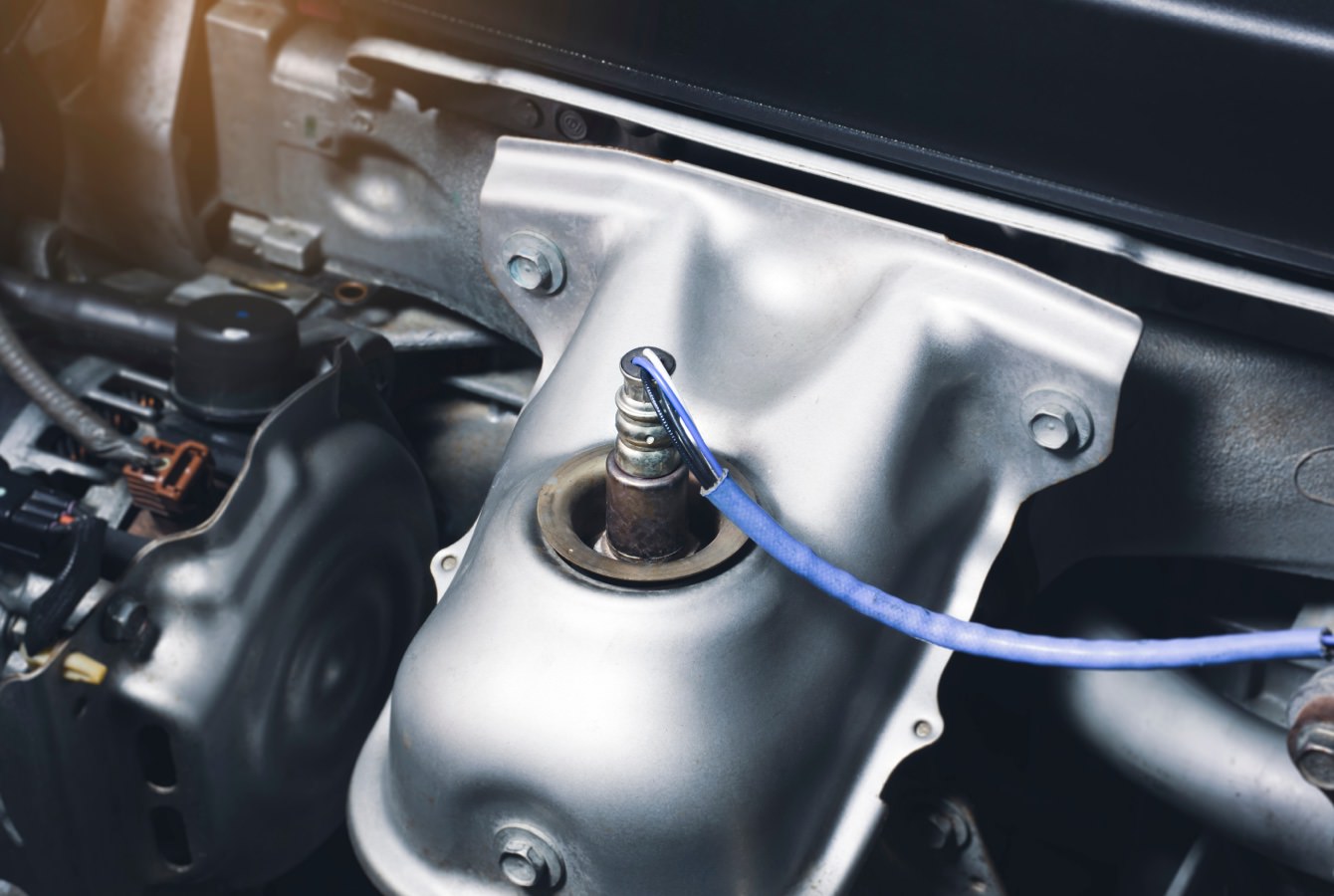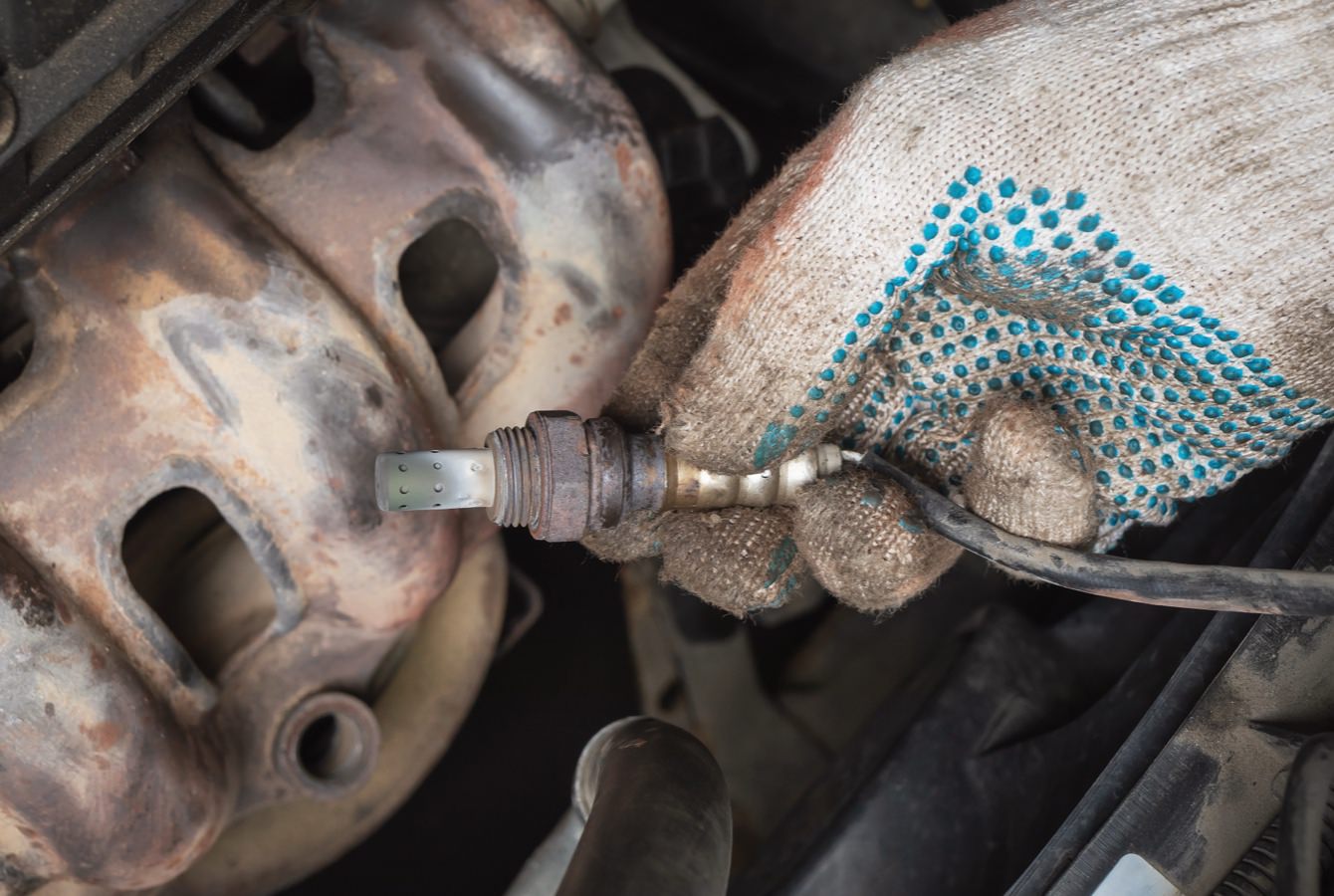Purpose of an Oxygen Sensor
Designed to measure the amount of unburned oxygen in the exhaust, the oxygen sensor is one of the most important sensors in the vehicle. Also known as an O2 sensor, it sends the information that it collects to the Electronic Control Unit (ECU) where it uses the data to determine the proper air-fuel mixture for the engine to complete an efficient combustion cycle. Operating in real time, the oxygen sensor can detect if the air-fuel mixture is lean (too much oxygen) or too rich (not enough oxygen). The ability to dynamically adapt to changing conditions means that the engine can adapt when the driver accelerates, decelerates or idling.

Why Do O2 Sensors Fail?
Designed to deliver dependable service, there are three common reasons why oxygen sensors fail:
Age/high mileage
As the miles roll on, the O2 sensor will likely need to be replaced between 60,000 and 90,000 miles.Internal Contamination
The O2 sensor can become contaminated with gas byproducts like sulfur and fuel additives. In addition, the sensor is exposed to the harmful exhaust gases and high heat. Over time, this contamination can cause the sensor to malfunction.Electrical Problem
Issues with the sensor’s heater circuit or wiring can cause it to fail.
Symptoms of a Bad O2 Sensor
A failing oxygen sensor causes the air-fuel mixture to become imbalanced which can lead to host of engine problems including reduced gas mileage, increased emissions and poor engine performance. Be on the lookout for the signs of a bad oxygen sensor:
Poor Gas Mileage
Without the ability to properly regulate the air-fuel mixture, a bad O2 sensor can result in reduced gas mileage and more trips to the gas station.Loss of Engine PoweR
Sluggish engine performance or slow response when accelerating can point to a malfunctioning oxygen sensor.Decreased Engine Performance
Engine misfires, rough idling or other signs of poor engine performance can be traced back to an O2 sensor that has lost the ability to function properly.Check Engine Light
A bad oxygen sensor can cause the check engine light to illuminate.
Troubleshooting a Bad Oxygen Sensor
If you suspect that a failing oxygen sensor is the source of the problem, before you replace the O2 sensor, you need to diagnose the problem.
Physical Inspection
Conduct a physical inspection of the oxygen sensor, looking for problems that could cause it to malfunction. Look for cracks or signs of wear on the sensor body and check the wires for cuts, fraying or other damage. Check for rust on the sensor connector pins and housing, and look for coolant, oil or other substances around the sensor.

Scan for Fault Codes
Start by scanning the vehicle with an OBDII diagnostic tool. Common codes related to a bad oxygen sensor include:
- PO132 (O2 sensor circuit low voltage - bank 1, sensor 1)
- PO133 (O2 sensor - bank 1)
- PO135 (O2 sensor heater circuit - bank 1)
- PO137 (O2 sensor circuit low voltage - bank 1, sensor 2)
- PO155 (O2 sensor heater circuit - bank 2)
- PO171 (lean air-fuel ratio - bank 1)
- PO175 (rich air-fuel ratio - bank 2)
- PO420 (malfunctioning O2 sensor can trigger this catalytic converter code)
It is important to remember that a diagnostic trouble code doesn’t necessarily mean the oxygen sensor has failed. A code relating to the oxygen sensor can be triggered by another issue like an exhaust leak or a wiring problem. If you don’t get to the root cause of the issue and simply replace the O2 sensor, the code will come back.
Reading Oxygen Sensors
A dirty or fouled oxygen sensor is one that has become covered with a foreign substance and can no longer can effectively measure the amount of unburned oxygen that is in the exhaust. When investigating a potential oxygen sensor issue, examining the physical appearance of an O2 sensor can give clues to what is wrong with the part.
White: Silicone poisoning due to using improper gasket sealant can turn the head of the oxygen sensor white. Be sure to use sealant that is labeled as sensor safe.
Black: Carbon buildup resulting from a rich fuel mixture can cause the head of the sensor to turn black. A clogged air filter or leaking fuel injector can cause the condition.
Green/Brown: If antifreeze gets into the combustion chamber, it can damage the oxygen sensor, turning it green or brown. A leaking intake manifold gasket, warped cylinder head or leaking cylinder head gasket can cause this.

Learn more about quality brakes, find your car part, or find where to buy your auto part today.
The content in this article is for informational purposes only. You should consult with a certified technician or mechanic if you have questions relating to any of the topics covered herein. DRiV and its affiliates (including Federal-Mogul Motorparts LLC) will not be liable for any loss or damage caused by your reliance on any content.